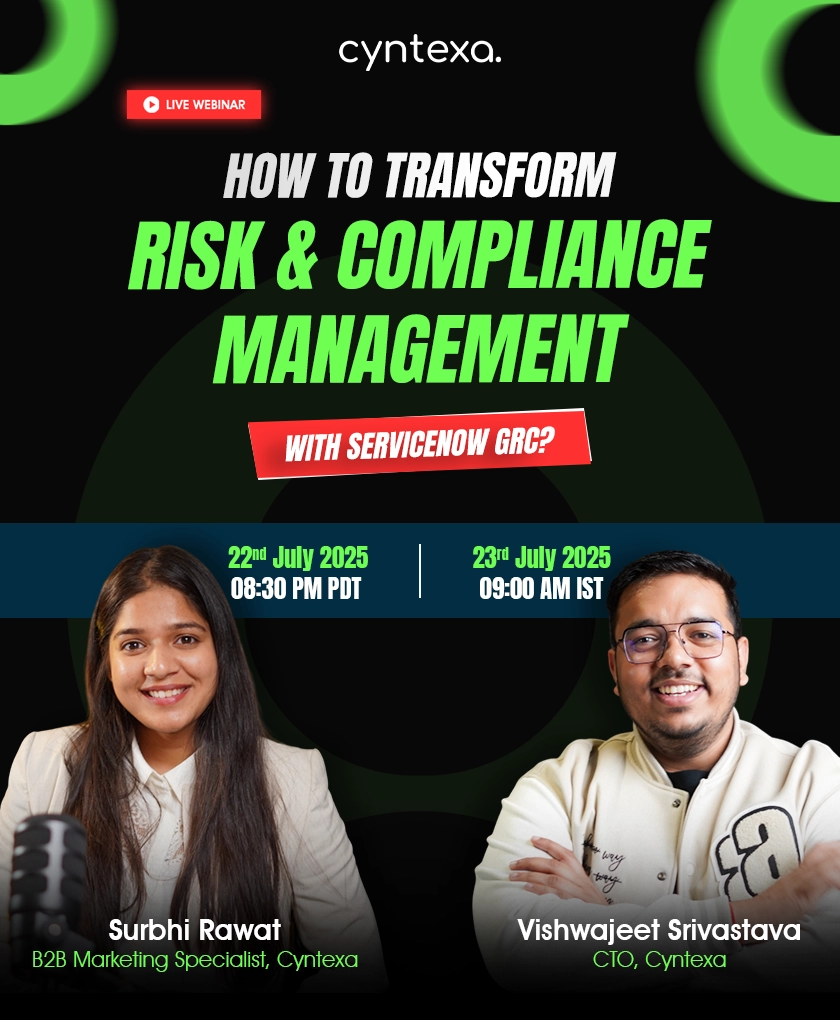Understanding Cloud Security Assessment: Why It’s Essential and How to Conduct?
Table of Contents
Businesses today heavily invest in cloud security, but despite that, they experience security issues, such as data theft, breaches, and other vulnerabilities. This could be due to a lack of attention over configuration setup or the result of human errors. Stanford University research shows that 88% of cloud breaches are caused by human errors, including misconfigurations and inadequate access controls that lead to insecure data storage, API exposure, and more.
This highlights the critical reality that implementing security tools alone is not enough. Therefore, it is necessary to conduct ongoing assessments to ensure that your cloud computing infrastructure is not vulnerable to threats. Cloud security assessment ensures that security gaps are detected and mitigated before attackers can exploit them.
This blog will introduce you to cloud security assessment – how it works, why it matters, and the steps involved. Let’s get started!
What Is Cloud Security Assessment?


This process is concerned with the evaluation of your cloud infrastructure to ensure that appropriate security protocols are followed to mitigate cyber threats.
In simple terms, it is a strategic process in which businesses scan and overview their overall cloud infrastructure to identify any security gaps, threats, and vulnerabilities that might exist.
This process examines various areas of your cloud environment, including its infrastructure, workloads, and existing cloud security practices. Further in these practices, cloud security assessment evaluates your user account settings, the cloud’s access and permission controls, and other management-related practices to identify if there is any security gap.
You must note that this is an ongoing process and must be conducted frequently every 6 to 12 months. In case you have upgraded your infrastructure, it is advised to practice cloud security assessment.
Why Should You Conduct A Cloud Security Assessment?
As your business evolves, so does your cloud environment. With new and advanced implementations of services, your environment is susceptible to changes. Therefore, even after implementing cloud solutions, there are chances that threats might enter your system due to certain emerging gaps.


In such cases, the cloud security assessment process constantly monitors your cloud environment, identifying any areas of concern. Moreover, it offers a multitude of benefits while ensuring optimal security of your system.
1. Ensures Secure Cloud Infrastructure
Your underlying infrastructure is the key aspect of your cloud environment; therefore, safeguarding it must be a priority. Any compromise done in its safety can affect the working of your whole system, leading to sensitive data leaks, reputational damage to your business, or legal issues.
Hence, by conducting a cloud security assessment process, you can evaluate all the components of your infrastructure, such as the network, servers, hardware, storage, etc., for security issues and gaps. It offers detailed insight from every scan, specific to each component or overall cloud environment.
2. To Avoid IAM (Identity and Access Management) Misconfigurations
It is important to ensure that the right person has the right and optimal access to a resource. However, negligence in access management can result in IAM misconfiguration. It happens when users are granted more permission to use cloud accounts than they should have access to.
In simple terms, when IT users grant more permissions to various users, such as cloud engineers, DevOps professionals, and more, while ignoring the best practices to be followed, this results in IAM misconfiguration.
It can allow attackers to gain false access to sensitive data, cloud resources, account access, and more, leaving an opportunity for them to alter the information for false means.
Cloud security assessment scans these permissions and identifies areas where excessive or irrelevant access is granted, allowing you to establish control over them.
3. Eliminates Unrestricted Outbound Access
Your business workloads, i.e., the computing resources that you are leveraging or your everyday business tasks, are going on in the cloud environment. While setting up the cloud, users must enable ‘private’ access to these workloads, allowing only the relevant business teams to work on them.
However, sometimes users leave these instances connected to the internet, enabling the SSH ports and RDP (Remote Desktop Protocol). Through these configurations, users can access the environment remotely through machines and servers.
Meanwhile, allowing ‘public’ access to these ports enables their exposure to the attackers. This configuration should apply not only to workloads but also to databases and storage blocks.
Thereby, cloud security assessment identifies unrestricted outbound ports, allowing users to enable private access over them.
4. Identifies Past Threats and Their Impact
Cloud security assessment reviews your network history and looks for any weakened security points and their impact on the organization. It assesses what happened due to these neglected security points. Was there any data breach, theft, or any other vulnerability that took place?
By analyzing the history, it offers a detailed report showcasing insights into these points and whether these gaps still exist. Cloud security assessment further recommends security solutions such as encryption or multi-factor authentication and the areas where these can be implemented to ensure protection.


Cloud Security Assessment Tools
These tools are specialized software and methodologies that are used to evaluate the security posture of your organization’s cloud infrastructure. They conduct the stepwise assessment process to identify vulnerabilities, compliance issues, and misconfigurations within the cloud environments.
Moreover, these tools offer several features and functionalities, enabling organizations to mitigate risks and enhance overall security strategies. They recommend security practices and ensure adherence to relevant compliance standards to eliminate any legal issues.


Let’s get an idea of some of the top cloud security assessment tools:
AWS Security Hub
Security Hub is a comprehensive cloud security offering that is designed to enhance the overall security of your AWS environment. It automates best security checks, aggregates security alerts, supports automated remediation, and gives a unified view of security across all AWS accounts and services.
Key features it offers:
- Automated Security Checks: The AWS security hub automatically performs various security checks that are relevant to industry standards such as PCI DSS and CIS. It further utilizes these checks to calculate the security score of your environment or its components and identify improvement areas.
- Centralized Findings Collection: This tool consolidates the security findings from various AWS services and offers you a unified view over the console in a standardized format called AWS security finding format.
- Automated Remediation Alerts: Based on the security findings, this tool sends automated alerts to users to work on the issue areas and when resolved. Also, you can create custom workflows to facilitate these alerts.
Google’s Security Command Center
Google SCC is a security management platform that offers visibility and control over security across the Google Cloud Platform. It offers you the features to monitor, detect, and respond to threats and vulnerabilities within your cloud infrastructure.
The SCC integrates various Google Cloud services to enhance security posture management and threat detection capabilities.
Key features it offers:
- Advanced Threat Intelligence: Google SCC integrates with Mandiant Threat Intelligence, which enhances the command center’s ability to detect and respond to emerging threats in real time by applying threat rules. This approach helps in identifying threats at a deeper level in the cloud environment.
- Centralized Visibility: The command center offers a centralized dashboard that gives visibility across multiple services. Therefore, you can gain a simplified view of the security across these services and ensure relevant compliance standards.
- Automated Case Management: This tool automatically identifies and groups similar security issues into cases and further assigns them to the appropriate agent for resolution.
This is just one of the versatile security tools that Google offers; the list is ongoing. It includes Google Cloud Identity and Access Management (IAM), Google Cloud Armor, Google Cloud Key Management Service (KMS), and more. Therefore, gain deeper insight into how a technology startup enhanced its cloud security and scalability by leveraging GCP. The results are remarkable, as it achieved 36% improved data protection using advanced encryption techniques and 46% enhancements in its security posture.
Microsoft Defender For Cloud
Microsoft Defender for Cloud is a cloud-native security solution that is designed to protect cloud workloads and applications across various platforms, including Azure, AWS, and Google Cloud.
It integrates advanced threat protection, vulnerability management, compliance management, and identity and access management to ensure strong security for cloud environments.
Key features it offers:
- Attack Path Analysis: This tool maps out the connection patch across your assets and analyzes it to see how one vulnerability can put your critical resources at risk. With this, you get a clear understanding of the threat’s impact on your environment and can prioritize resolution accordingly.
- Cloud Workload Protection: Microsoft Defender for Cloud offers threat detection and advanced defenses for your virtual machines. It focuses on scanning and recommending security measures centric to your workloads.
- DevOps Posture Visibility: It empowers your security teams to protect your cloud environment through code-to-cloud capabilities. That is, they can make modifications to the code to ensure security.
Still unsure about the best tool for your business? Seek cloud consulting services from Cyntexa. Our cloud security experts can provide you with personalized guidance over tool selection, implementing security measures, and ensuring ongoing protection of your environment.
How to Conduct Cloud Security Assessment: Step-By-Step Process
Conducting cloud security assessments in your business is not an easy task and requires the utmost attention to detail and business team collaboration. Here is a 7-step guide for conducting a successful cloud security assessment and seeking the best results possible.


Step 1: Gain Insight Into Your Data Over The Cloud
Start by evaluating what resources or information exist in your cloud environment. It involves all your customer data, financial reports, user credentials, business secrets, and other important resources.
Among these, you must bifurcate which data is sensitive and cannot be compromised in any case. Unfortunately, if it gets exposed, what will be its impact? You must priorly evaluate the consequences of the cloud security risks that might occur due to data leak, theft, or breach.
Will these risks have an impact on your cloud environment and its functionality, or will they cause significant damage to your company’s reputation? Gaining an idea over the same, helps you take possible corrective measures to lower the vulnerability impact.
Step 2: Evaluate Your Current Cloud Security Posture
This step highlights the importance of examining your current security posture. It refers to your cloud infrastructure’s overall security strength and how well it can prevent cloud security risks. Analyze every component, workload, misconfiguration, and also third-party integration, if any.
Evaluate your existing system as to what preventive measures are in place and how rigidly they will stand against cloud threats.
Furthermore, you must assess the cloud computing security architecture of your cloud service provider. By doing so, you get a better idea of the security protocols, policies, technologies, and controls that your cloud provider has implemented to mitigate risks and ensure business continuity.
Step 3: Bring Your Teams Together
Gather your business, cloud, and IT teams to have an open discussion about the cloud security assessment process. Ensure that everyone understands the process, its key components, and the tests that will be performed to identify any vulnerabilities within your cloud environment.
You must discuss the tenure of this assessment with your teams, as it is important to agree on the start date and an expected timeline for completion so everyone is aligned on the same page. Your teams are the ones who work with the cloud environment and can offer you better insights.
Additionally, clarify whether the assessment will cover the entire environment or focus on specific areas, allowing the teams to prepare accordingly. This collaborative approach helps ensure a smooth and effective assessment process.
Step 4: Run The Test In The Environment
At this stage, the actual cloud security assessment begins, targeting various areas of your cloud environment.
It begins with vulnerability scanning, followed by penetration testing, which involves simulating real-world attacks to discover threats in the environment, reviewing access controls, configuration checks, compliance assessments, and monitoring for suspicious activity.
Therefore, the cloud infrastructure is assessed initially to guarantee its security and optimal working. Once that’s done, further it moves on to workload assessment, checking for any vulnerabilities or security gaps.
Further, it continues with a step-by-step approach in which other critical components like data storage, networks, and applications are reviewed. As a result, by systematically assessing each component of the environment, you will have a better understanding of where potential risks exist and how to address them.
Step 5: Analyze The Result
After the assessment is completed, it’s time to analyze the findings and identify areas where security is lacking.
You can gain insight into the results by using cloud security tools. These tools offer a detailed report that includes the scanned components of the cloud environment, along with the specific vulnerabilities that were discovered in them. For each vulnerability, you get a clear description of the issue, how it could impact your business, and the potential risks involved.
Finally, they offer recommendations on how these security gaps can be addressed or mitigated to strengthen the overall protection of your cloud environment. This thorough analysis will guide you for the next steps in improving cloud security.
Step 6: Work On Improvement Areas
After identifying the vulnerabilities, it’s time to focus on strengthening your cloud environment.
Start by planning and executing the necessary security improvements based on the findings. This may involve updating configurations, patching software, or enhancing access controls and permissions. In order to avoid future issues, make sure to incorporate strong security protocols such as encryption, multi-factor authentication, and regular monitoring.
By considering these steps, you can improve the overall security of your cloud environment and lower the risk of future vulnerabilities. Additionally, if you are undergoing for cloud migration, make sure these security measures are in place in the new environment to prevent any potential risks.
Step 7: Conduct the Assessment Frequently
To ensure continuous, robust security in your environment, you should conduct cloud security assessments on a regular basis. It helps you stay ahead of potential threats as your cloud environment evolves. Also, with this, you can quickly identify and address new vulnerabilities before they majorly impact your business.
Make it best practice to schedule these assessments periodically to ensure your cloud environment remains secure and compliant.


Capital One’s 2019 Data Breach: A Deep Dive into the Incident (Real-life example)
Capital One, an American bank, experienced a massive data breach in 2019. The incident compromised the personal information of over 100 million customers.
The Cause
Paige Thompson, a former Amazon Web Services (AWS) engineer, was responsible for this data breach to occur. She exploited a misconfigured web application firewall on Capital One’s cloud server, which allowed her unauthorized access to sensitive data of over 100 million customer records, 140,000 Social Security numbers, and 80,000 bank account numbers.
Thompson had developed a tool while she was employed at AWS that scanned for misconfigured accounts. She used the tool to identify vulnerabilities in Capital One’s systems.
The Discovery
This breach was discovered in July 2019, however, the tenure for unauthorized access was way before in March 2019. The breach was discovered by a security analyst who reported the vulnerability to Capital One.
In June 2022, she was found guilty on several counts and was given a time-based sentence and five years of probation.
Data Compromised
- 140,000 Social Security numbers
- 80,000 bank account numbers
- Credit scores, payment history, and personal contact information of customers and credit card applicants
Post-Breach Responses
After the data breach occurred, Capital One prioritized cloud security assessment and practices an overall review of its cloud environment. Starting with performing configuration tests across all components, they checked the configurations and permissions for all firewalls and settings in AWS. They implemented strong encryption methods for data at rest as well as in transit. Further, they enhanced IAM policies to restrict unauthorized access.
This data breach incident further highlights the lack of security practices Capital One followed that caused them severe repercussions. However, cloud security assessment catered to the issues and led Capital One to implement required security practices.
Conclusion
In this evolving business landscape where cyber threats are on the rise, conducting cloud security assessments has become essential to safeguard your business. Performing this process frequently ensures that your cloud environment is healthy and that security gaps are covered.
By following the steps mentioned in this guide, you can better understand your cloud environment, identify vulnerabilities, and implement necessary security measures. Moreover, by using the tools offered by the top cloud service providers, you can rely on them without worrying.
If you need expert assistance in assessing your cloud environment or navigating complex security challenges, Cyntexa offers comprehensive cloud security solutions for AWS, Google Cloud, and Azure. Our team of experienced cloud professionals closely assesses your cloud environment and guides you through tailored solutions to enhance your cloud security and protect your business.
They use advanced AI-driven analytics and threat intelligence capabilities to identify modern vulnerabilities in your cloud environment. By crafting a compelling cloud strategy, we ensure relevant compliance and security practices. Furthermore, we provide mobile security solutions and fraud protection to ensure an overall security experience.
Don’t Worry, We Got You Covered!
Get The Expert curated eGuide straight to your inbox and get going with the Salesforce Excellence.
AUTHOR
Vishwajeet Srivastava
Salesforce Data Cloud, AI Products, ServiceNow, Product Engineering
Co-founder and CTO at Cyntexa also known as “VJ”. With 10+ years of experience and 22+ Salesforce certifications, he’s a seasoned expert in Salesforce Data Cloud & AI Products, Product Engineering, AWS, Google Cloud Platform, ServiceNow, and Managed Services. Known for blending strategic thinking with hands-on expertise, VJ is passionate about building scalable solutions that drive innovation, operational efficiency, and enterprise-wide transformation.


Cyntexa.
Join Our Newsletter. Get Your Daily Dose Of Search Know-How
Frequently Asked Questions
There is no fixed cost associated with cloud security assessment. However, it depends on multiple factors, such as your assessment’s size, and whether it is a lengthy process and requires time. It depends on the complexity of whether the process requires multiple iterations to be conducted.Along with this, it is subjected to the cloud provider you are leveraging and the type of cloud environment—multi-cloud, hybrid, or only cloud. Plus, if you are seeking cloud computing services from a partner firm, then it depends on their pricing options. Hence, all these factors cumulate and result in the appropriate pricing for cloud security assessment.
Here is a list of key factors that must be evaluated while performing a cloud security assessment:
- Compliance
- Encryption
- Network security
- Multi-factor authentication
- Backup and disaster recovery processes
- History of breaches
Cloud security checklist refers to a list of key considerations or things that you must keep in mind while ensuring the security of your cloud environment. Consider the following:
- Ensure relevant user access and permissions
- Establish encryption practices
- Establish IAM strategy
- Ensure security measures centric to each cloud infrastructure component
The components might differ based on which application you are using to assess your environment. However, some of the key components are:
- Vulnerability Testing: Regular and ongoing testing is done to identify any vulnerabilities that exist in the cloud system.
- Network Testing: It involves evaluating the network architecture of the cloud, such as firewalls, network segmentation, intrusion detection, and prevention systems.
- Penetration Testing: This refers to simulating a test attack to see its impact on the cloud environment and its components in real-time.
- Dynamic Application Security Testing: It helps in detecting vulnerabilities and issues in applications while in production.
- Cloud Control Matrix: It offers guidelines to cloud vendors so they can assist their prospective customers regarding security assessment policies offered by them.











